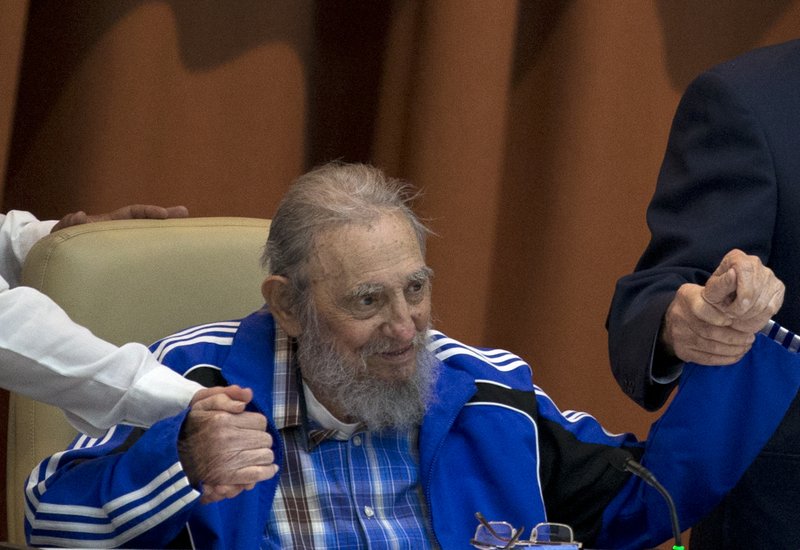
Cuban leader Fidel Castro would always laugh off speculation about his health.
With an athletic build, and physical stamina that lasted deep into his 70s, it seemed he would continue to rule for many more years.
Castro’s own physician, a specialist in longevity, even suggested in 2004 that the leader could live to 140. “I am not exaggerating,” Dr. Eugenio Selman said.
So Cubans were stunned when their aging, yet seemingly indefatigable leader announced he had undergone emergency intestinal surgery and temporarily relinquished presidential powers on July 31, 2006, 13 days before his 80th birthday.
He vanished from sight for four years, with videos and photographs of him being released only sporadically. Even his good friend and ally, Venezuelan President Hugo Chavez, said in early 2009 that he doubted Castro would ever return to the public stage.
But Chavez was wrong.
In July 2010, Castro surprised everyone when he was photographed meeting with scientists at a Havana institute, then gave an interview on state television. Soon he seemed to be popping up everywhere, meeting with economists, veterans and even visiting the aquarium.
He used the publicity to warn the world of what he described as the threat of a nuclear war pitting the United States and Israel against Iran.
The revolutionary leader looked frail but mentally sharp, and he seemed to gain strength with each appearance.
By September, Castro was strong enough to give two outdoor speeches under Havana’s blazing sun: the first on the steps of Havana University, and the second in front of the capital’s former presidential palace.
That second speech went on for more than an hour and was attended by tens of thousands of people, and Castro felt comfortable enough to poke fun at his long-faded reputation for oratorical endurance.
“We haven’t even been here two hours,” he grinned in conclusion. “But I’m leaving now. It’s getting hot.”
Castro’s reemergence proved short-lived. By 2011 he was seen less and less often. At a brief appearance at a key Communist Party Congress in April 2011, Castro formally resigned as party leader and he appeared unsteady as he was led to his seat by a young aide.
He had apologized in an article days earlier for not having attended a march marking the 50th anniversary of Cuba’s victory at the Bay of Pigs invasion.
“Believe me that I felt pain when I saw that some of you were looking for me on the dais,” Castro wrote. “I thought everyone understood that I can no longer do what I have done so many times before.”
After his resignation, the length of time between Fidel’s appearances grew and he appeared older and weaker each time. After a January 8, 2014 appearance at a Havana art exhibit, he did not appear in public for at least a year. Photos of Castro with world leaders appeared only a handful of times in 2014.
Cuba’s government has never said officially what Castro was suffering from when he fell ill, even when he announced in February 2008 that he was resigning for health reasons. But it was widely reported to have been complications involving diverticulitis, an intestinal ailment common in older people.
Castro gave a few details of just how sick he was in an August 2010 interview with the Mexican newspaper La Jornada, saying his weight fell to 145 pounds (66 kilograms). That’s extremely thin for a man known for his large frame.
“I was at death’s door, but I came back,” Castro told the paper.
In the interview, Castro described lying in a hospital room during the illness, hooked up to machines, and wondering how long it would be before his suffering would be over.
“Laid out in that bed, I could only see what was around me, machines I did not understand,” Castro said. “I didn’t know how long this torment would continue. The only thing I could hope for was that the world would stop.”
“But I recovered,” he added, proudly.
Months after falling ill, Castro acknowledged he underwent numerous surgeries for his condition and at least one had gone badly, almost killing him.
Cubans first had to face up to their president’s advancing age when, on June 23, 2001, he fainted briefly while giving a speech in the searing sun.
They were again reminded of his frailty when he fell after giving a speech on Oct. 20, 2004, shattering a kneecap and breaking an arm.
Although he was back in public within two months, a report in 2005 said Castro suffered from Parkinson’s disease.
On rare occasions, Castro did acknowledge his mortality, especially as he grew older.
“I promise that I will be with you, if you so wish, for as long as I feel that I can be useful — and if it is not decided by nature before,” Castro said in March 2003, accepting a sixth term as president of Cuba’s governing body.
He died on Friday night.



